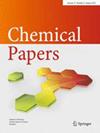Extraction of nervonic acid from Acer truncatum oil by urea inclusion
Abstract
Acer Truncatum Bunge is a woody plant of the maple family unique to China that produces oil containing 5‒7% nervonic acid, which has various uses in medicine. This work demonstrates the extraction of nervonic acid ethyl ester from the oil of this plant using urea inclusion. In the case of the urea inclusion solid, there is no new peaks found in SEM image and just a superposition of those expected peaks representing urea and fatty acid ethyl esters can be observed, indicating that the interaction force between urea and fatty acid ethyl esters was just intermolecular forces rather than chemical reaction. A 95% ethanol solution was determined to be the optimum solvent for this process. Urea inclusion was found to separate various fatty acid esters with decreasing efficiency in the order of lignoceric acid > behenic acid > arachidic acid > stearic acid > nervonic acid > palmitic acid > erucic acid > cis-11-eicosenoicacid > oleic acid > linoleic acid > linolenic acid. In the optimized process, ethyl esters of cis-11-eicosenoicacid, oleic acid, linoleic acid and linolenic acid were removed from the oil via a two-stage urea inclusion mechanism that also removed sterols and other substances. Ethyl esters of arachidic acid, behenic acid and lignoceric acid were subsequently separated through a third-stage urea inclusion step. After six extractions, the product contained erucic acid and nervonic acid ethyl esters with a nervonic acid ethyl ester proportion of 52.4%. Characterization by infrared spectroscopy confirmed that the product was free of residual urea.

 求助内容:
求助内容: 应助结果提醒方式:
应助结果提醒方式:


